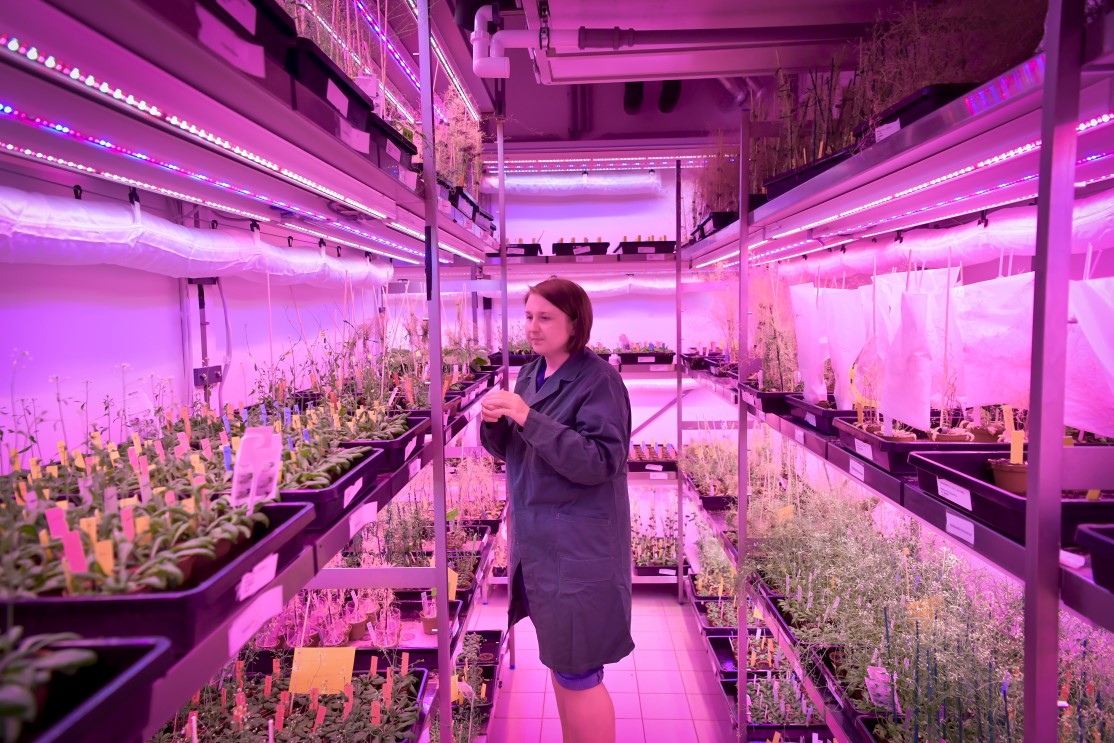June 8, 2022
Why Plants Love Pink
We glimpse behind the doors of ISTA’s pink room to discover thousands of seedlings.
Pink is a color with diverse connotations. For many, it’s a color to wear with pride, but in plant biology it has a special application. Most plants strive in pink light. They gobble it up using photosynthesis. At the Institute of Science and Technology Austria (ISTA), there is a whole laboratory that glows in pink light. Why that is and how that is useful for science, Dorota Jaworska, the Institute’s plant facility technician, can explain.

“Most plants appear green because they reflect the green part of white sunlight and absorb the other colors,” Dorota explains. “They are feeding off the red and blue light which combine into pink.” Using only pink light to feed her plants reduces the electricity bill and allows Dorota and her colleagues to control the plant growth. “Just by slightly changing the light, we can influence leaf and root formation and many other aspects of their development.”
Dorota and her colleagues are taking care of thousands of Arabidopsis thaliana plants, also called thale cress. The Institute’s scientists modify the plants’ genome to study the resulting effects. Some specimens grow taller or shorter than usual, some become super droopy, and some only change on a molecular level imperceptible to the naked eye. First selected for this use at the beginning of the twentieth century, Arabidopsis thaliana has quite literally grown to become the standard for genetic experiments on plants.
There is yet another surprise: a strange optical effect that Dorota experiences every day. “Once your eyes have adjusted to the pink light and you leave the room, for a short time you see everything in shades of green,” she describes. This is because the photoreceptor cones in her eyes that register the color of light become saturated by the intense pink light and lose sensitivity for it. Once out of the room, the still sensitive cones for green light take over and a negative afterimage in green remains. Read more about Dorota and her gardening for science here.



